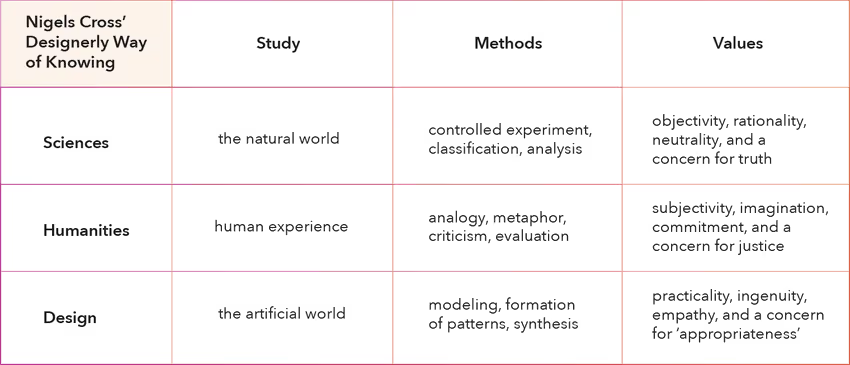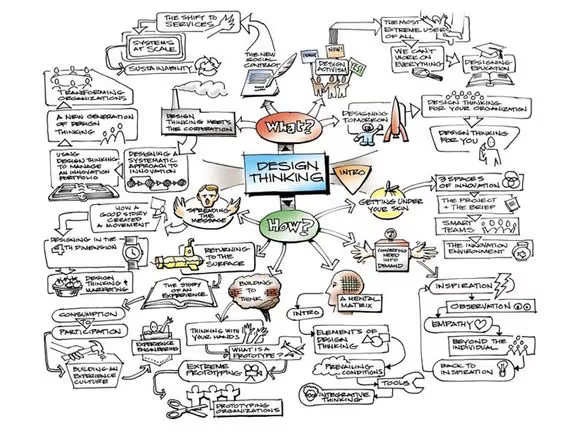Design is more than just the physical appearance of it, aesthetics do make a fair enough difference but above all, Design solves a problem.
How to create a better design for everyone?
Once we have gained a sense of meaning from the world around based on research and experiences we begin to think of exclusivity in design. The challenge is to slow down and think who you are designing for and why are you doing it? Design thinking comes together with deliberate efforts. Being empathetic toward each other is important to think broadly about how can we come together as a team to solve challenging problems.
To get your team from where it is today to where you see it tomorrow requires shared goals and a similar vision followed through a design thinking process created for the team and with the team. Broadly “Design Thinking could be fairly described as an understanding of its inclusive process and therefore all people involved, no matter their role, are responsible for creating a product that is useful, functional, accessible, aesthetically appealing, affordable and also profitable.”
The Practitioners
In 1990 the term design thinking was ideated by Tim Brown and David M. Kelly.
"Design thinking is a human-centred approach to innovation that draws from the designer’s toolkit to integrate the needs of people, the possibilities of technology, and the requirements for business success"
- Tim Brown
Design thinking goes way beyond its ceremonial naming phase. It has been practised by designers and implemented the midst of workflow for creating extraordinary products. In order to know where we are moving in the future, we must first understand from where in the past we have evolved.
Let us go through some history which proves that Design Thinking was religiously and rigorously followed and practised through structured ways of unique unravelling minds even before the term "Design Thinking" was coined.
I don't even like the word 'fashion' very much. I always said that the word 'fashion' should be used in its original sense… as a verb, 'to fashion', meaning 'to make.'
- Jean Muir
Known to the world as a British fashion designer from the late 1900s, Jean Muir, saw herself as a dressmaker. Miss Muir has been described as bringing common sense to clothing design to the pitch of genius. She cared about how her clothes felt to wear as well as how they looked to others.
Her work wasn't just some airy-fairy notion of creativity. They are an incredibly valuable piece of art.
"You don’t go about being in fashion in Jean Muir, you go about being in Jean Muir, which is kind of beyond fashion, you know."
- Joanna Lumley.
Design Thinking is simply "Thinking like a Designer"
In 1982 Nigel Cross, a researcher in the field of Human-computer interaction before he began investigating design methodology launched his seminal book "Designerly Ways of Knowing" which looks at what makes the way designers think and make decisions different to other professions a great influence which helped in the construction of design thinking. Throughout history, good designers have applied a human-centric creative process to build meaningful and effective solutions.

“Everyone can — and does — design. We all design when we plan for something new to happen, whether that might be a new version of a recipe, a new arrangement of the living room furniture, or a new lay tour of a personal web page. So design thinking is something inherent within human cognition; it is a key part of what makes us human.”
- Nigel Cross.
Thinking ahead made Steve Jobs successful. His ideas were unique and they to an extent changed the way design was perceived in that particular period. Jobs not only conveyed to people what he was selling, but he also showed them why they needed it.

Jobs in his home office. No public photos have surfaced of his office at Apple's headquarters in Cupertino. Photo: Diana Walker
History has many more examples just like these but its only fair to make a detailed document of the same in a separate article. They created their own systems and observed the behaviour of the users to create products we can't deny we love and accept till date. They created their own set of Design Thinking and implemented it successfully. So can we?
”Design Thinking goes above and beyond the principles. It is something that has to be built within a company for over a time through successfully tested and failed methodologies. Its the structure that comes to being after trying one process after another until you know what works for you. Everything that any profession does—from research and development to strategy, to content creation—can be improved through design thinking.
Below is one of the examples or a set structure which is Design Thinking to some of us.
A Glimpse into Contemporary Design Thinking Process
Subconsciously or consciously design thinking to most people is what has been classified into five different levels - Empathise, Define, Ideate, Prototype, and Test.
Empathy is crucial because it allows you to set aside your own assumptions about the world in order to gain insight into users and their needs.
Defining is where a team analyses the observations and synthesize them in order to define the core problems identified so far.
In the processes third stage Yes, we brainstorm or ideate and take the best ideas forward to the prototype level.
When you prototype the intention is to create rough drafts of solutions to decide if these will prove beneficial for the problem.
Testing is the final stage of the design thinking's five stages model yet alterations and refinements are made in order to rule out problem solutions to come to final conclusions.

Design Thinking process: empathise, define, ideate, prototype, test
Why Design Thinking is exclusive to each team.
Experienced designers often complain that design thinking is too structured and linear. And for them, this could be true.
A creative mind can not be brought down to levels of thinking in one systematic way on relying on one set of principles, but managers on innovation teams generally are not designers structure and linearity help managers try and adjust to these new behaviours.
As Kaaren Hanson, formerly the head of design innovation at Intuit and now Facebook’s design product director, has explained: “Anytime you’re trying to change people’s behaviour, you need to start them off with a lot of structure, so they don’t have to think. A lot of what we do is a habit, and it’s hard to change those habits, but having very clear guardrails can help us".

Simply put, teams can only move as quickly as they can successfully communicate. The collaborative nature of design thinking circumvents this friction by involving all team members from the very beginning in a workshop-based approach.
As the whole team moves through key exercises together, a shared vocabulary organically develops and the common ground begins to be built. When teams have a shared vocabulary, the focus can move from what to how.
Design thinking can transform your organization to better meet the needs and wants of both your employees and customers. It drives innovation and amplifies the creative problem-solving ability of every employee by pulling away from the barriers that prevent them from thinking differently. It’s great for designing products and experiences as a team, can also be put to work to help solve any number of organizational challenges and creates a cohesive work environment.

